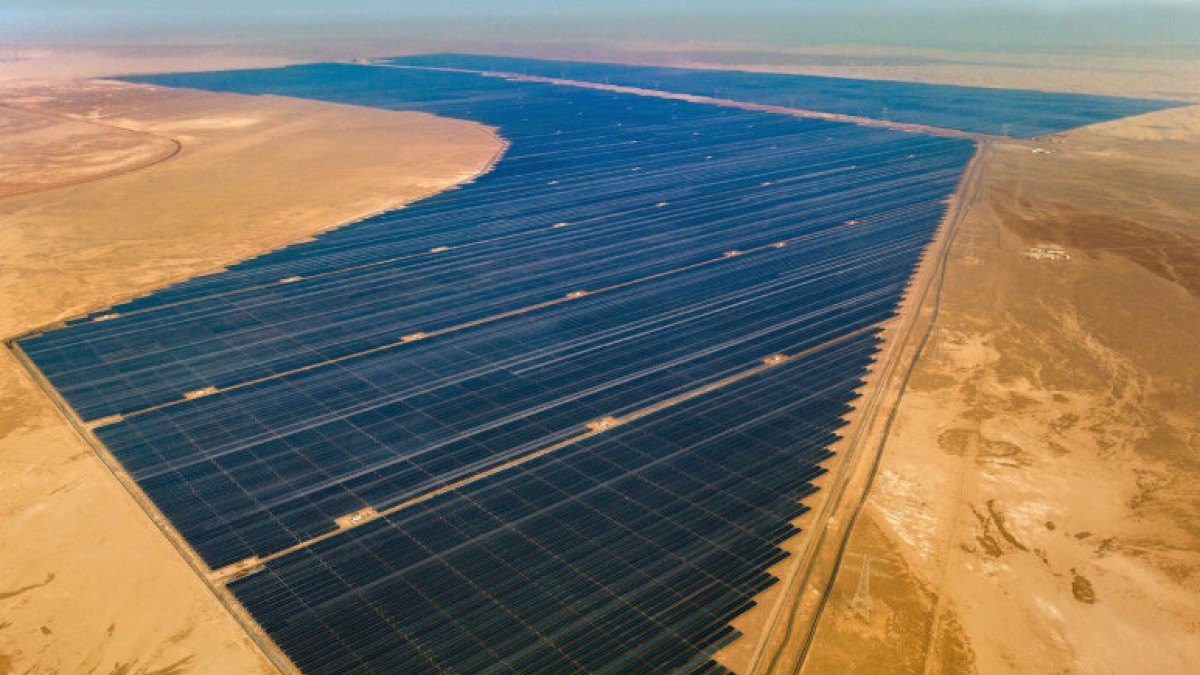
The United Arab Emirates has launched the Al Dhafra solar farm – now the world’s largest single-site solar farm – ahead of COP28.
The 2-gigawatt (GW) solar farm is 22 miles (35 km) from Abu Dhabi and features almost 4 million bifacial solar panels. It will power nearly 200,000 homes and eliminate over 2.4 million tonnes of carbon emissions annually.
It created 4,500 jobs during the peak of the construction phase, and the solar panels were installed at an average rate of 10 megawatts (MW) a day during construction.
Al Dhafra was jointly developed by Abu Dhabi Future Energy Company (Masdar), Abu Dhabi National Energy Company (TAQA), French power company EDF Renewables, and Chinese solar developer JinkoPower.
TAQA owns 40% of the project, and Masdar, EDF Renewables, and Jinko Power each own 20%. The solar farm will supply power to Emirates Water and Electricity Company (EWEC) following a 2020 power purchase agreement.
Now that Al Dhafra is online, the UAE’s solar power production capacity has increased to 3.2 GW. In September, EWEC called for proposals to develop a 1.5 GW solar farm in Al Khazna near Abu Dhabi. UAE is aiming to triple its renewable energy capacity to 14 GW by 2030.
Electrek’s Take
The UAE is hosting COP28 in Dubai, which kicks off on November 30, so, understandably, its rulers would time the launch of the world’s largest solar farm just ahead of that event – it’s simply good PR.
UAE is rightly being criticized for putting the CEO of its state oil company, the Abu Dhabi National Oil Company – the world’s 12th-biggest oil company by production – in charge of COP28. It’s also being criticized for hosting COP28 yet having an all-of-the-above approach to energy.
The UAE Energy Strategy 2050 targets an energy mix of 44% clean energy, 38% gas, 12% “clean coal” (yes, it really says that), and 6% nuclear. It says it will become carbon neutral by 2050, but how it will do that on 50% fossil fuels is anyone’s guess.




